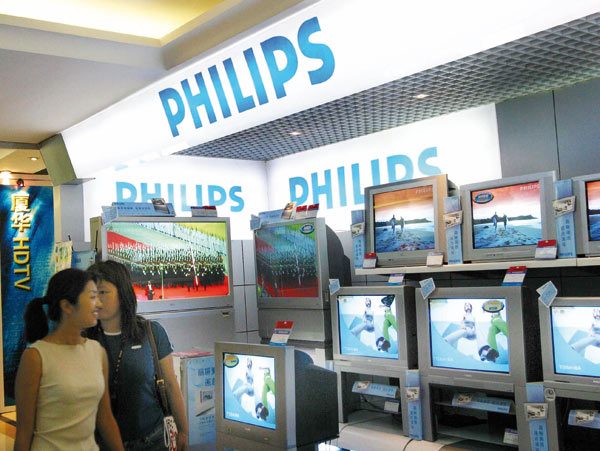 |
|
More companies from Europe and the United States are returning home as labor and raw material costs rise in China. Provided to China Daily |
As benefits fall in China, many overseas firms are going home
More companies from Europe and the United States that used to outsource production to China are returning home as price gaps narrow.
For Dutch engineering and electronics conglomerate Philips NV, improved automation and smarter robots meant it made more sense financially to build a new factory in Drachten in 2012 than extend its operations in China.
Philips found the robots to be more productive than workers in Guangdong in southern China, where it, like many other foreign multinationals, had to contend with rising labor and raw material costs and occasional staff shortages.
General Electric Co took arguably a bigger gamble by opting to reshore some production from China to its Appliance Park in Louisville, Kentucky, in 2012.
There, GE was able to redesign one of its water heaters and slash the time it takes to get them to warehouses. Efficiency rose and material costs fell by more than 20 percent, enabling it to lower the US retail price of its GeoSpring heater from $1,599 to $1,299. GE also returned production of some washing machines and refrigerators to the US.
Similar cases have been popping up over the past five years as more European and US companies find it makes more sense to return jobs and production home, a strategy known as reshoring.
These moves mostly involve companies that sell mainly to their domestic markets. And they indicate that China’s competitiveness as a global low-cost production base is waning.
"A number of German companies operating in China have told me that it makes less and less sense for them to manufacture their products here and export them to Europe," says Stefan Gessner, general manager of Linder + Wiemann GmbH, a German company that sources equipment for stamping tools in China.
"This is mostly because labor costs are rising while subsidies and other forms of support from the Chinese government are shrinking," he says. "For those that decide to remain or expand here, it seems to be more a case of go local to stay local."
Labor costs have shot up by as much as 500 percent in China since the turn of the century. In line with the changing expectations of Chinese factory workers, the average annual urban income jumped to 41,799 yuan ($6,850) in 2011, up from 24,721 yuan in 2007, according to the National Bureau of Statistics.
Boston Consulting Group, which has published a series of papers on reshoring, predicts that ongoing trends could "virtually close the price gap" for most products sold in the US in a couple of years. A similar argument can be made for Europe.
"Within five years, the total cost of production for many products will be only about 10 to 15 percent less in Chinese coastal cities than in some parts of the US where factories are likely to be built," BCG wrote in 2011.
"Factor in shipping, inventory costs and other considerations, and — for many goods destined for the North American market — the cost gap between sourcing in China and manufacturing in the US will be minimal."
